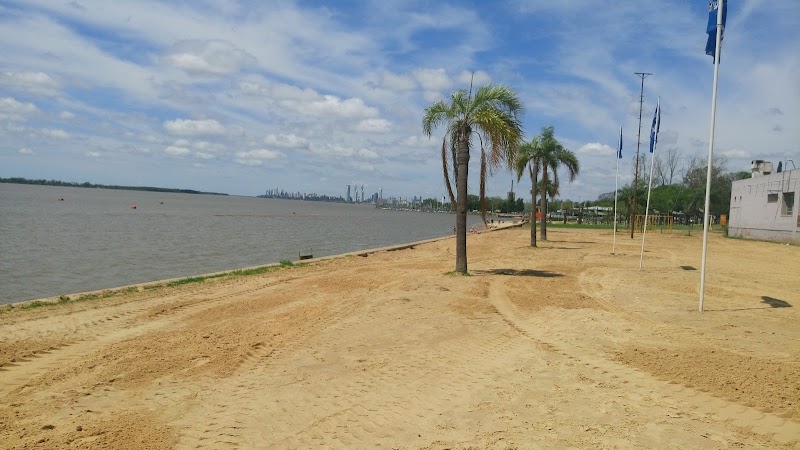
Urban Trail Running Events in Rosario: Where Cityscape Meets Adventure
Explore Rosario’s unique blend of urban and natural landscapes through its growing trail running events. These routes challenge runners with dynamic terrain, weaving city streets and riverside trails that call for both speed and adaptability.
Choose Trail Shoes with Grip
Mixed surfaces from dirt to cobblestone require shoes that hold well without sacrificing lightweight performance.
Hydrate at Every Station
Stations appear every 3-5 km; stay ahead of thirst to maintain steady energy and focus during runs.
Run Early or Late
Avoid midday heat by scheduling runs during cooler daylight windows for optimal comfort and safety.
Prepare for Variable Terrain
Stay alert for roots, gravel patches, and occasional slippery leaves; control your pace on technical sections.
Urban Trail Running Events in Rosario: Where Cityscape Meets Adventure
Rosario, Santa Fe, isn’t just the hometown of the Paraná River’s fierce currents—it’s a dynamic playground for urban trail runners eager to merge city rhythm with natural grit. These events thread through Rosario’s sprawling parks, riverbanks, and unexpected green corridors, offering a taste of terrain that’s both challenging and accessible. Expect routes ranging between 8 to 15 kilometers with mild elevation gains, mostly through mixed surfaces: compact dirt trails, cobblestone paths, and occasional asphalt stretches. You’ll feel the pulse of the city intertwining with the natural elements as you sprint past the trees waving in the Paraná breeze and alongside the river daring you forward.
Typical urban trail running events in Rosario tackle the city’s changing face—historic neighborhoods giving way to pockets of woodland and riverside dunes. Elevation isn’t mountainous but enough to shift your pace, usually topping out at 100 to 150 meters of gain per event. Terrain varies day-to-day: some courses challenge your footing with loose gravel and roots sneaking across park trails; others reward with wide tracks along the waterfront where the current pushes a cooling wind against your skin.
These runs come alive in the early morning or late afternoon, when the sun casts long shadows and the city exhales with less heat and fewer cars. Hydration stations are typically spaced every 3-5 kilometers, signaling practical breaks. Footwear should balance grip and cushion—trail shoes with solid treads to grip the mixed surfaces, yet light enough to maintain speed. Timing your run for spring or fall is ideal, with temperatures between 15-25°C allowing for comfortable performance without overheating.
Prepare for brief bursts of sprints through wooded areas that feel fiercely themselves, gathering energy from the natural resistance of mud or slippery leaves underfoot. The river banks offer sweeping views but expect occasional gusts that test your endurance. These events don’t require expert trail skills but demand alertness and adaptability as you navigate tangible urban nature in motion.
Rosario’s urban trail runs provide a direct, refreshing contact with both city and wild elements. They extend a practical invitation to runners of varying experience to test themselves against a course that respects its natural resistance while embracing urban accessibility. Lace up, hydrate, and listen closely to the landscape—it’s a pulse that won’t let you forget where city life and trail adventure collide.
Nearby Trips
All Adventures
Boat Charters
Water Activities
Adventures near Rosario, Santa Fe
Discover the unique and memorable adventures that make Rosario, Santa Fe special.
Frequently Asked Questions
Are urban trail running events in Rosario suitable for beginners?
Yes, many event routes range between 8 and 15 km with moderate elevation and manageable technical sections, making them accessible for runners with basic trail experience.
Where are the best spots for water refills during trail events?
Official hydration stations are placed roughly every 3 to 5 kilometers, typically near major park entrances or recognizable landmarks along river paths.
What kind of terrain should I expect on these routes?
A mixture of compact dirt trails, cobblestones, city sidewalks, and small gravel paths with occasional tree roots and slippery leaf-covered areas.
Are there any cultural landmarks along the course?
Yes, some routes pass close to Rosario’s historic districts, featuring colonial-era buildings and public art, offering a backdrop that connects runners to the city’s heritage.
Is it safe to run alone on these trails?
Urban trail events are supervised and generally safe. However, running during official event times is recommended; solo runs should be planned during daylight hours with a mobile phone for safety.
What wildlife might be encountered along the urban trails?
While mostly city-adapted, runners might spot local birds like herons near the river, or squirrels darting along tree branches within park borders.
Recommended Gear
Trail Running Shoes
Lightweight with good tread for traction on mixed urban trail surfaces.
Hydration Pack or Belt
Keeps you hydrated during longer runs, especially in warmer months.
Breathable Running Clothing
Helps regulate temperature and wick moisture during active runs.
Lightweight Layer or Windbreaker
Protects against cooler temperatures and wind along riverbanks during colder seasons.
Local Insights
Hidden Gems
- "Paraná River riverbanks offer quiet trails rarely crowded, especially near the Fish Market area."
- "Rosario’s Paseo de las Artes provides a scenic cultural backdrop on some event routes."
Wildlife
- "Waterfowl like great egrets and kingfishers frequently inhabit the river edges, adding life to the runs."
- "Squirrel and coati are occasionally spotted in parks adjoining trails."
History
"Rosario’s urban trails overlap with historically significant neighborhoods known for their 19th-century architecture and role in Argentine independence movements."
